Introduction to Tanzanite's Color
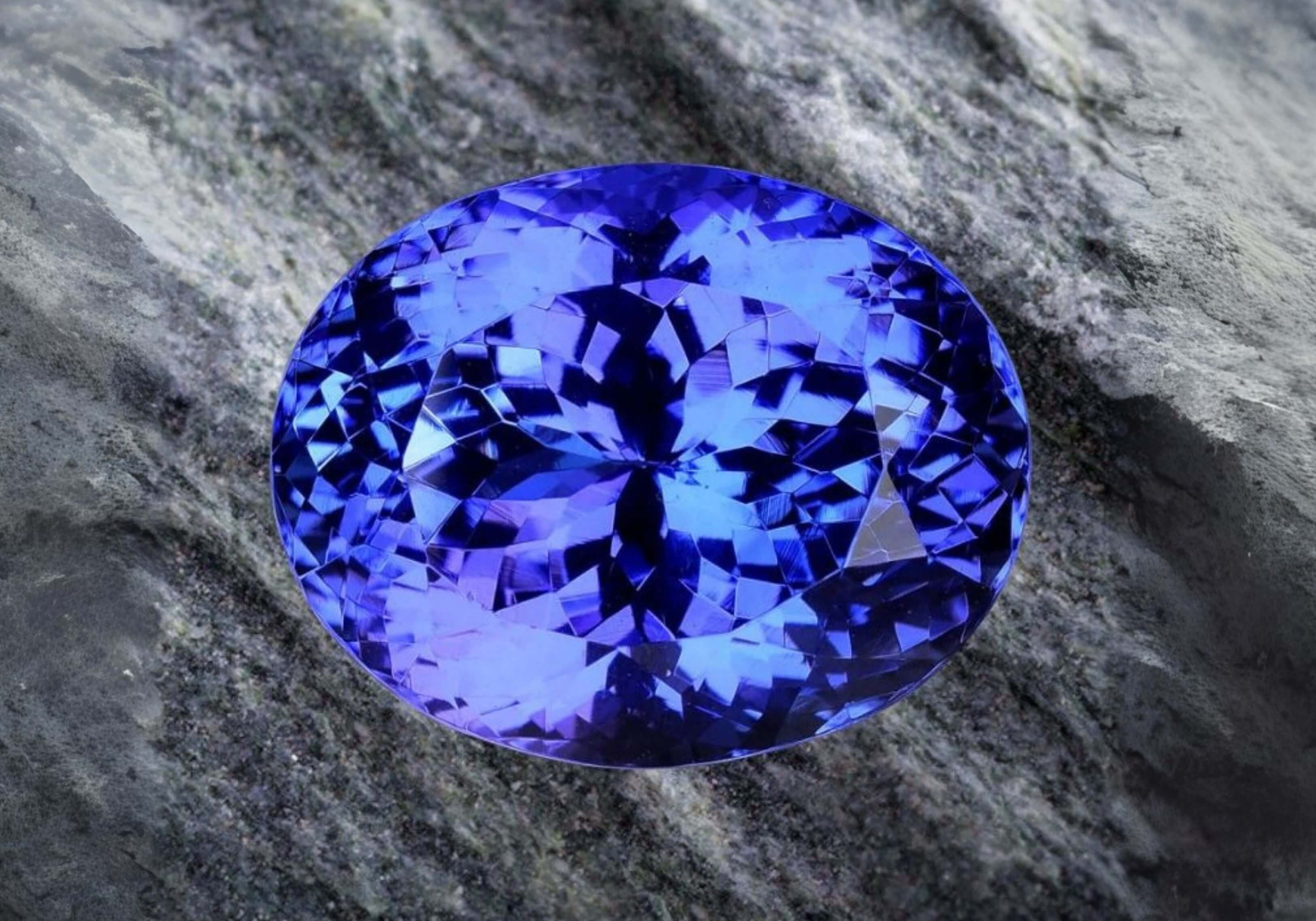
Color
All tanzanite has the rare ability to show two different colors at the same time: both blue and violet. Tilt any tanzanite in the light, and you will see this beautiful mix!
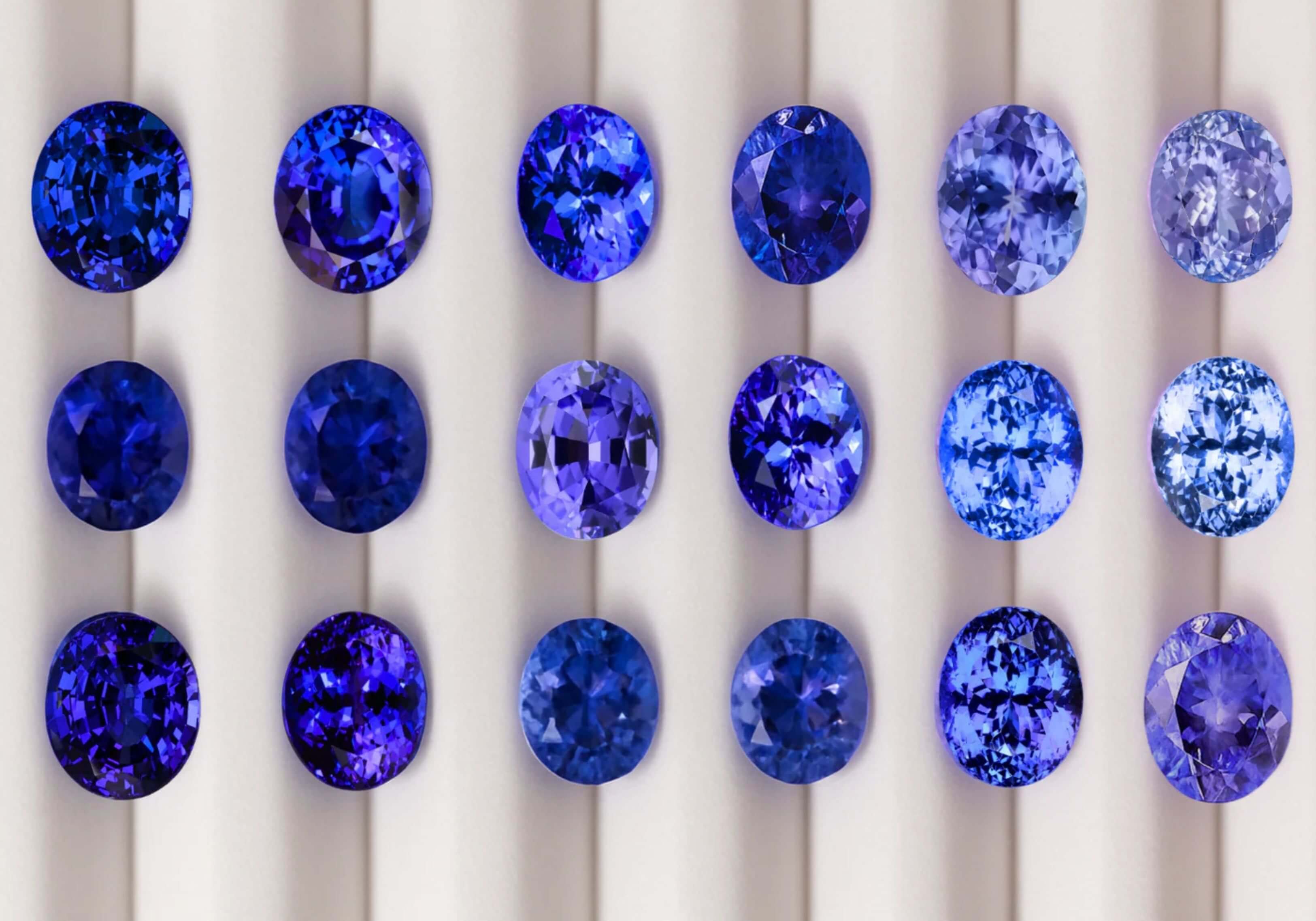
A RANGE OF COLORS
Tanzanite forms in a wide range of colors: from light sky blues and lilacs through to deep indigos and royal blue. Some large tanzanites appear to be pure blue, but a closer look will, in most cases, show both colors simultaneously.
Blue, violet, lavender, sky blue, royal blue tanzanites
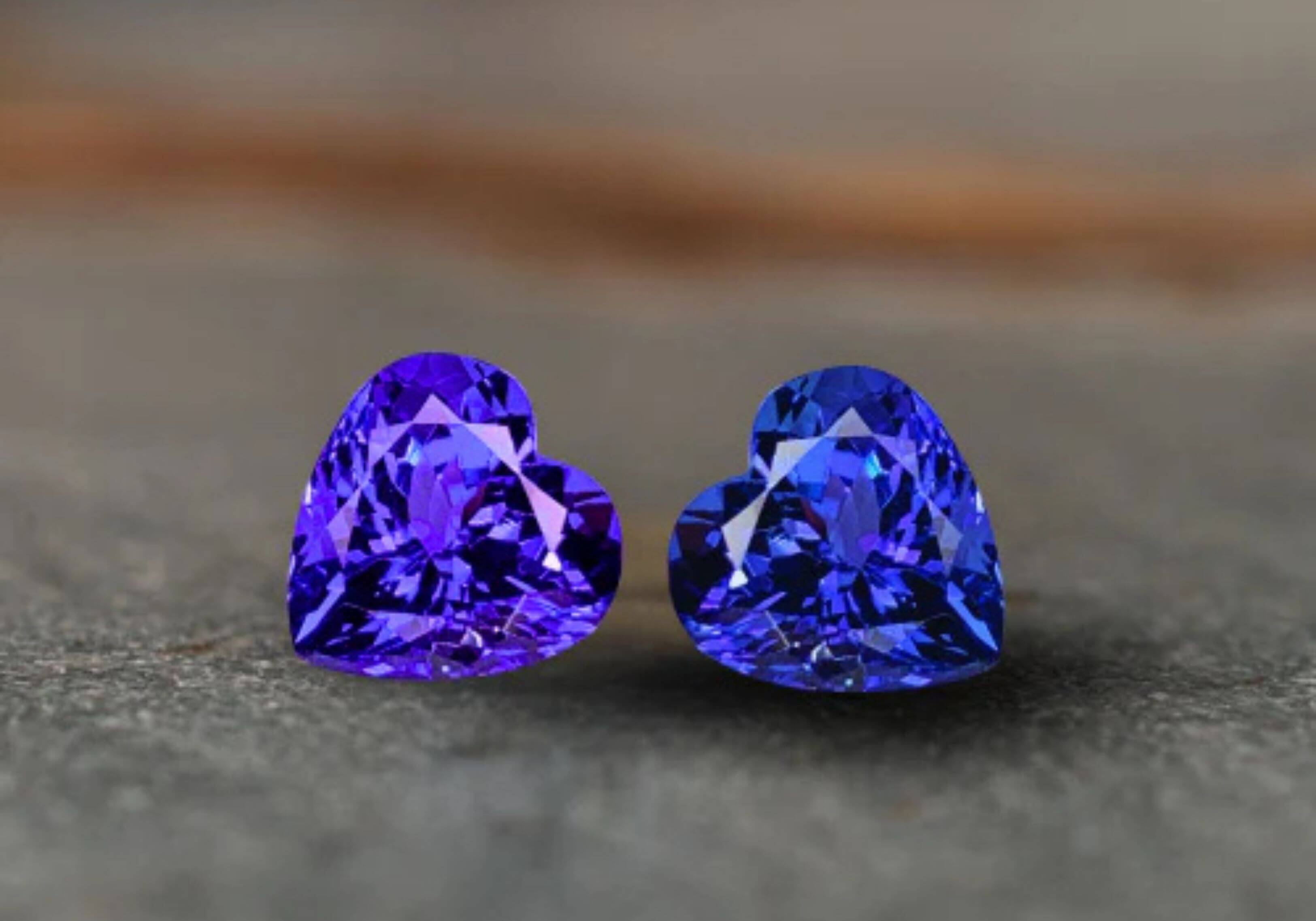
blue or violet dominant?
Tanzanite is one of only two known gemstones that clearly exhibits two colors at once, due to its unique crystalline structure.
This characteristic— called pleochrism—means a tanzanite can never be pure blue or pure violet. Instead, every stone is a kaleidoscopic combination of the two.
- A tanzanite which has more violet than blue is described as “bluish-Violet” or “bV”
- A blue-dominant tanzanite, which reflects more blue than violet, is described as “violetish-Blue” or “vB”
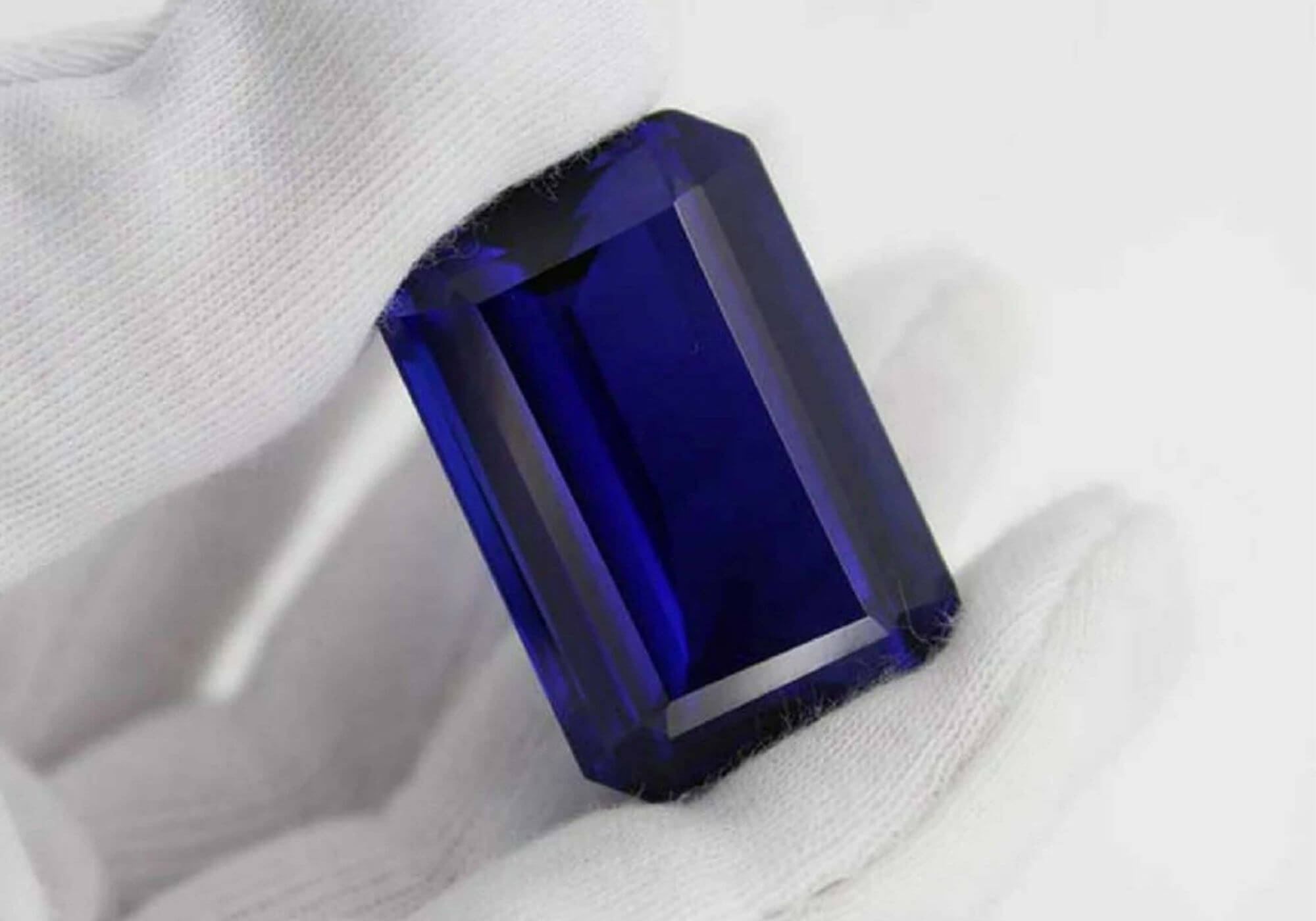
Smaller stones are usually lighter
SIZE & COLOR
It is very rare that a small tanzanite will have a deep color. The colors of tanzanites between 1.00 and 3.00 carats will usually run from pastel to medium. As a rule, the deepest colors are only found in tanzanites weighing 5 carats or more.
Stones over 50 carats are deep blue, and after the 100-carat mark the color shifts to a blue so dark it is almost black.
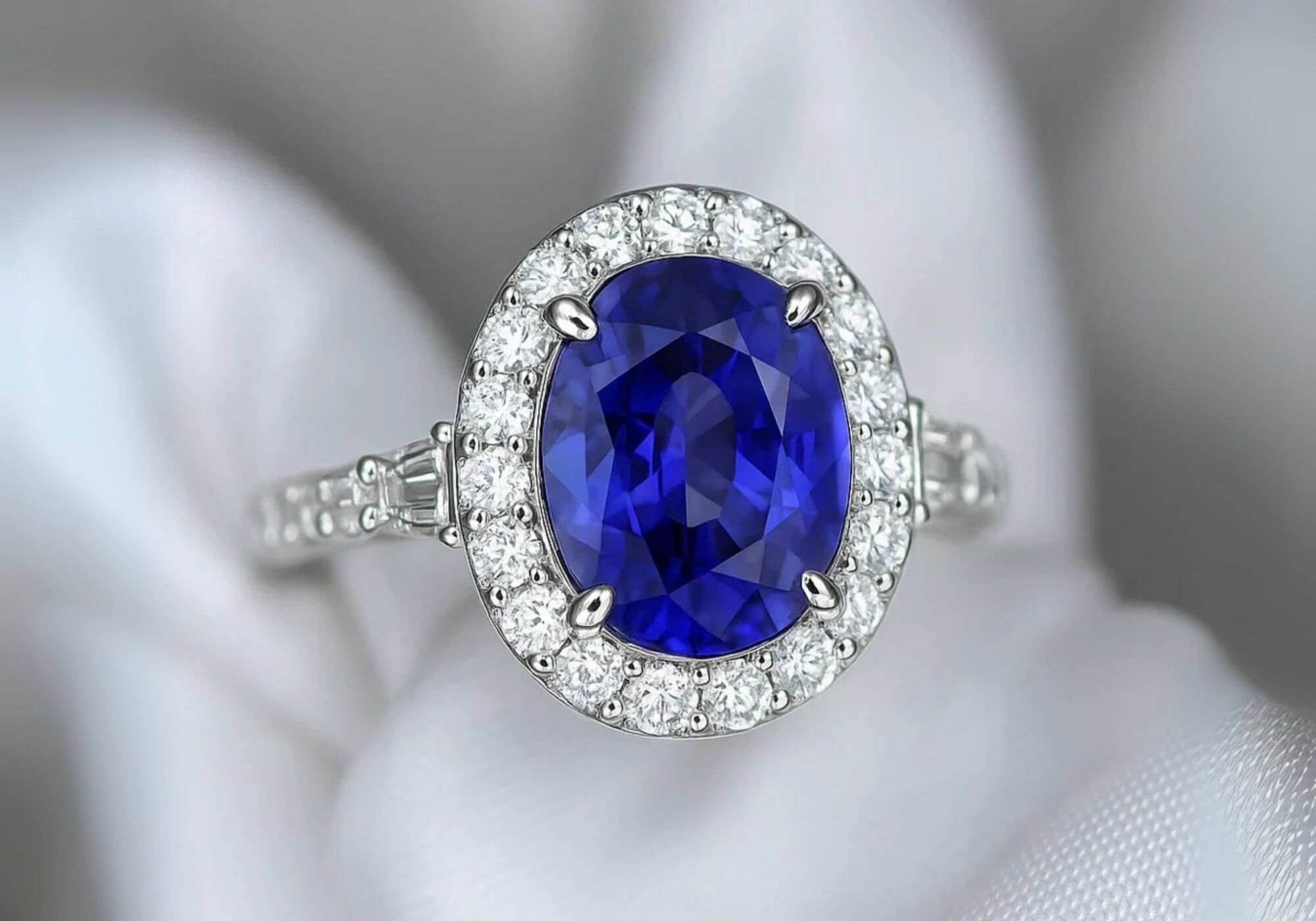
WHAT DOES "AAA" TANZANITE MEAN?
Tanzanite grading systems are not standardized, and no official gemological authority (such as the GIA) recognizes the term "AAA" as a formal grade. In the gem trade, however, AAA is often used to describe stones with strong to vivid color saturation in the desirable violet-blue to blue-violet range, paired with excellent clarity (usually eye clean). "AA", in turn, describes the second-most desirable color and a slightly lower price.
The term "AAA" has become popular in online retail as a shorthand for high quality, but it is a subjective trade description, not a scientific classification. Different dealers can and do apply it differently. This fact makes it very important for consumers to buy from a trusted source.
TANZANITE COLOR FAQS
Pastel colored tanzanites are far more common than more richly-colored stones: about 80% of mining production is pastel in shade, from soft grayish blues to lilacs.
Vivid, more intensely colored stones occur much more rarely in nature, and, thus, are more expensive. The deepest tanzanite colors only make up to 1% of the world’s total tanzanite production.
Because of their beauty and comparative rarity, darker-colored tanzanites are more expensive than the lighter-colored stones. The richer and more vibrant the color, the rarer and more expensive the tanzanite.
Nevertheless, the color intensity of a tanzanite gemstone does not reflect the stone’s quality, only its rarity. Each tanzanite, no matter what color, is still incredibly rare.
The size and color of tanzanite gemstones are closely interrelated: larger stones tend to display the deepest colors, while smaller ones are usually pastel-colored.
It is very rare to find a small, richly-colored tanzanite. Tanzanite between 1.00 and 3.00 carats will usually be pastel to medium colored. As a rule, the deepest colors are only found in tanzanites weighing 5 carats or more.
Stones over 50 carats are deep blue, and after the 100-carat mark the color shifts to a blue so dark it is almost black.
Yellow light (indoor lighting) will make a tanzanite appear more violet, while white light (outdoors) will make the stone lookmore blue. This is a completely natural effect resulting from tanzanite’s crystal structure. The degree of the color change will be different for each stone, with some tanzanites being much more "moody" than others.
Just like you, every gemstone is unique. No two are exactly alike, and each has a different personality. The beauty of colored gemstones is like a flower garden: the variety is practically endless.
Therefore, the most perfect gemstone might not be the most expensive or “perfect” one—choose the one that speaks to you and makes your heart sing!
This is a GIA color notation used by gemologists to describe a gemstone’s hue, tone, and saturation:
- “vB” means violetish-blue: the dominant color is blue with a secondary violet component
- the first “6” refers to tone, with 6 indicating a medium-dark shade
- the second “6” refers to saturation, with 6 meaning vivid or strong color intensity.
So, a vB 6/6 tanzanite has a vivid, medium-dark blue color with a slight violet influence, which is considered one of the most desirable color profiles for fine tanzanite.